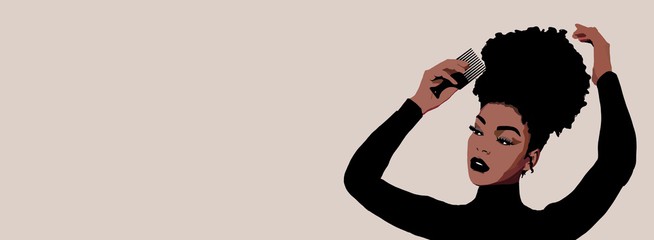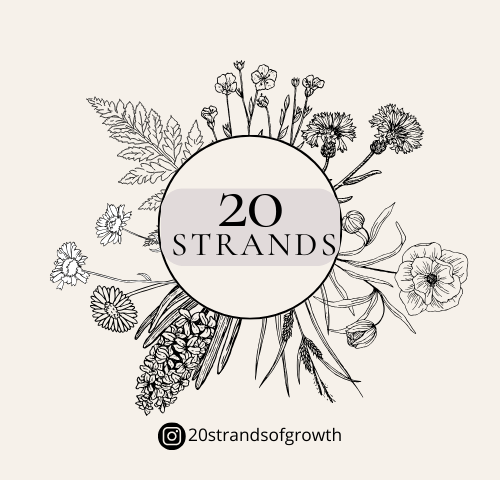
Let me start with a hair back story.
My last relaxer was in October 2014. I’ve always had a good amount of hair; density was never a problem.
But, I wanted more.
I had weak ends and my hair was getting… limp.
I’d only had my hair cut once in my life, and everyone said I looked like a boy. So having short hair was out of the question.
My only choice was to transition.
(To transition is to let your hair grow out without relaxing/texlaxing for a few months, then the relaxed or processed hair is cut, leaving only the natural hair.)
I transitioned for a little over a year, then I chopped off all my relaxed ends in March/April 2016 (I wish I had kept up with the timing of these things).
The journey hasn’t been easy. I’ve done things most people should never do to their hair. But I’ve learned (and still am learning) to do better.
Here are a few things I learned.
Lesson 1: Invest in Good Products.
Expensive doesn’t always mean effective. Sometimes all your hair needs is good ol’ Dudu Osun (African Black soap) to clean your scalp. Other times it needs the pricier TRESemmé® shampoo, with the moisture-infusing formula to balance cleanliness with extreme moisture.
NOTE: the product does not make the hair longer, it only helps the process.
Lesson 2: Know yourself.
Everyone is different. Every head of hair is different. Get to know your own hair and your body. Get information about your specific hair type, hair texture, curl pattern, porosity and thickness. There’s a lot of information online and tons of videos on YouTube about all of this
As the brilliant philosopher—whose name I can’t remember—once said, “(Wo)man, know thyself”.
Lesson 3: Wash day is a whole day
I’ll be honest, washing my Type 4c natural hair is not a quick, 3-minute affair. It is a process, a job, an event, a tradition.
It requires focus, patience, and a LOT of arm/upper body strength!
Typically, your wash day routine should be;
- Pre-poo & detangle with a smooth, slippery product or oil. I use fenugreek powder and aloe vera gel with castor oil. I apply this directly to my hair and detangle with my fingers. I leave this in for an hour or overnight because… e be tins.
- Depending on how I’m feeling, I do a scalp scrub next. I’ve had a serious case of dandruff for about 8 months now and this helps to clean and refresh my scalp.
- Next is shampoo. Scrub only your scalp. Leave the strands alone. Rinse thoroughly. Wash *twisted* in sections as your hair gets longer.
- In the beginning, I deep-condition only on special days. Basically, I mix my deep-conditioner with some ayurvedic herbs, apply the mixture to my hair and put it in a processing cap. When I have time, i keep it in my silicone heating cap while I do some cleaning. On other days, I use my hair dryer attachment and sit under the heat cap for 15 minutes. As my hair got longer, I started doing this every biweekly on every wash day.
- On lazy days, I just use a leave-in conditioner after shampoo.
- Next, I moisturize using the LOC or LCO (L for liquid, C for cream, and O for oil) method and style my hair.
Lesson 4: Styling
Before the Covid-19 lockdown, I used to dread styling my hair. It was a long and painful process I did not enjoy at all. It’s like weekends in secondary school trying to get a spot in the salon to weave my hair for school. Mentally exhausting.
Now, twists are my best friend. The best part is that they don’t have to be neat. They just get the hair out of my face, and away from my hands. Protective styling is key to retaining length and keeping your hair healthy.
Protective styling is keeping your strands safe from you and other elements.
Lesson 5: Still on styling— heat and extensions.
Now I’m not trying to brag, but I have genetically strong hair. My family members are proof of that. Because of this, I’ve felt hair-vincible, like I can do whatever I want to my hair and nothing will happen. So I blow-dried often and flat ironed whenever I wanted to feel like Rapunzel.
It had consequences.
While I didn’t really have heat damage, my strands became weak and started breaking off at the slightest touch (I am still suffering from this, but it’s better these days).
As if that wasn’t enough, I got extensions as often as I could. Box braids, twists, and even Ghana weaving are a piece of cake—and they all had to be waist length. How else can one wear braids?
Like they say, you can’t eat your cake and have it. All that heavy manipulation added pressure to my already weakened hair and made the breaking worse.
So, when styling your hair, opt for something simple. Don’t do anything that will put pressure on your hair strands and scalp. Don’t be afraid to go back to secondary school “Mary Amaka” hairstyles and wear them out boldly. That’s how our ancestors wore their hair, anyway.
Not every time wig, braids, and fancy updos. Too much of that, and the consequences may be more than you can handle.
Lesson 6: Moisturize.
If you haven’t worked it out by now, I’ll tell you; I am a lazy natural.
I only remember my hair when I wake up and when I go to sleep. Lately, I’ve finally understood the benefits of moisturizing. You could invest in a specially formulated moisturizing product or simply use water.
A little spritz every day will go a long way. I’m challenging you to try it with me: moisturize every day (morning or evening) for a week, and tell me what you notice. It’ll blow your mind.
Don’t dunk your head in a bucket of water! Just lightly spray until it is a little damp is all.
I’m stopping here for now because you’re probably already tired. I’ll continue in Part 2.
There are only two parts, I promise (this is not a Nollywood movie).
Watch out for part 2!

One thought on “No-Stress Natural Hair Management: Part 1”